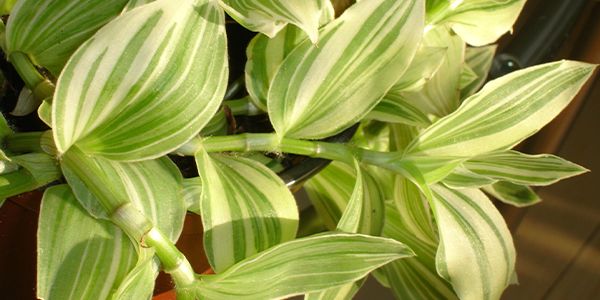Tradescantia price

Where to buy and sell Tradescantia, lowest (cheapest) and highest price.
check offers buy sell TradescantiaToday price for TradescantiaTradescantia wholesale prices 2022
The Current commodity price of Tradescantia per kg, pound in the world in the global markets
tradescantia
Price range: 1.5 - 1.5 EUR / 1 kg | Market: Mercados de Abastecimientos de Barcelona SA | Date: 2022-10-30
tradescantia
Price range: 1.5 - 1.5 EUR / 1 kg | Market: Mercados de Abastecimientos de Barcelona SA | Date: 2022-10-02
tradescantia
Price range: 1.5 - 1.5 EUR / 1 kg | Market: Mercados de Abastecimientos de Barcelona SA | Date: 2022-08-21
tradescantia
Price range: 1.5 - 1.5 EUR / 1 kg | Market: Mercados de Abastecimientos de Barcelona SA | Date: 2022-07-24
tradescantia
Price range: 1.5 - 1.5 EUR / 1 kg | Market: Mercados de Abastecimientos de Barcelona SA | Date: 2022-07-03
tradescantia
Price range: 1.5 - 1.5 EUR / 1 kg | Market: Mercados de Abastecimientos de Barcelona SA | Date: 2022-06-19
tradescantia
Price range: 1.5 - 1.5 EUR / 1 kg | Market: Mercados de Abastecimientos de Barcelona SA | Date: 2022-06-12
tradescantia
Price range: 1.5 - 1.5 EUR / 1 kg | Market: Mercados de Abastecimientos de Barcelona SA | Date: 2022-06-05
tradescantia
Price range: 1.5 - 1.5 EUR / 1 kg | Market: Mercados de Abastecimientos de Barcelona SA | Date: 2022-05-15
tradescantia
Price range: 1.5 - 1.5 EUR / 1 kg | Market: Mercados de Abastecimientos de Barcelona SA | Date: 2022-05-01
Tradescantia
The tradescantia plant is a species of spiderwort that is native to North America. It gets its name from the three-petaled flowers that bloom in shades of pink, purple, and white. The leaves are long and narrow, and the plant can grow up to 2 feet tall. Traditionally, the leaves were used to make a tea that was said to have medicinal properties. Today, the plant is grown primarily for its ornamental value. It can be found in gardens and nurseries throughout the United States. The tradescantia plant is a crawling, evergreen herb that is native to the eastern United States. It has thick, fleshy leaves that are dark green in color and have a glossy sheen. The plant produces small, white flowers that bloom in the summer. The tradescantia is an easily propagated plant and can become invasive if not kept in check. It is often used as a groundcover or as an accent plant in gardens. Tradescantia plants are very easy to grow and require little care. They can be grown in a wide range of soils and conditions, but prefer well-drained soil in a sunny location. These plants are tolerant of drought and will survive in dry conditions for long periods of time. However, they will not tolerate wet or waterlogged conditions and will quickly rot if the soil is too wet. To propagate Tradescantia plants, simply take stem cuttings from an existing plant and root them in water or moist potting soil. These plants will readily produce new roots and shoots, making them very easy to propagate. If you are growing Tradescantia plants indoors, be sure to provide them with bright, indirect light. These plants will tolerate some direct sun, but too much direct sunlight can scorch the leaves. Allow the soil to dry out somewhat between watering, as too much moisture can lead to root rot. Fertilize Tradescantia plants every few weeks during the growing season with a balanced fertilizer. These plants are not heavy feeders, so you should avoid using too much fertilizer, as this can burn the roots. Tradescantia plants are relatively pest and disease-free. However, they can be susceptible to mealybugs and spider mites. These pests can be controlled with regular applications of insecticidal soap or neem oil.Global tradescantia production
The plant genus Tradescantia (commonly known as spiderworts) contains around 75 species of perennial wildflowers native to the Americas. These plants are easily recognized by their three-petaled flowers, which can be either blue or purple in color. The genus is named after John Tradescant, a 17th-century English naturalist. The world's supply of tradescantia is largely produced in Latin America, with Mexico being the largest producer. Other significant producers include Brazil, Ecuador, Peru, and Colombia. In terms of global trade, the United States is the largest importer of tradescantia, followed by Germany, the Netherlands, and the United Kingdom. Mexico is the largest exporter of tradescantia, followed by Ecuador, Peru, and Colombia. Tradescantia is a genus of 70–75 species of herbaceous perennial wildflowers in the family Commelinaceae, native to the New World from southern Canada to northern Argentina including the West Indies. Common names include spiderwort or Indian paint. They are widely cultivated as ornamental plants.Download our new
Husfarm App
Stay up to date with the current prieces of agricultural products all over the world.
Do you want to sell agricultural products?
Are you an Agricultural processor looking for high-quality products to buy?
Post an ad for FREE!
